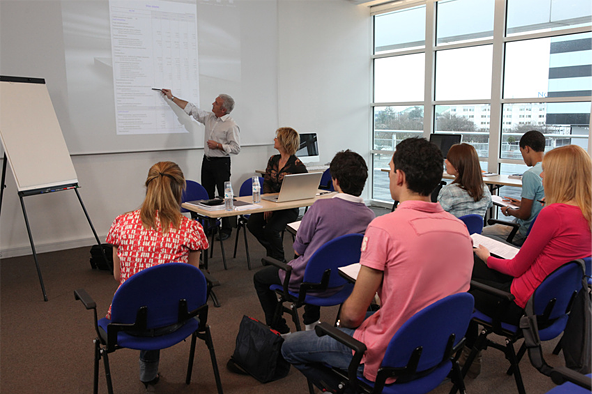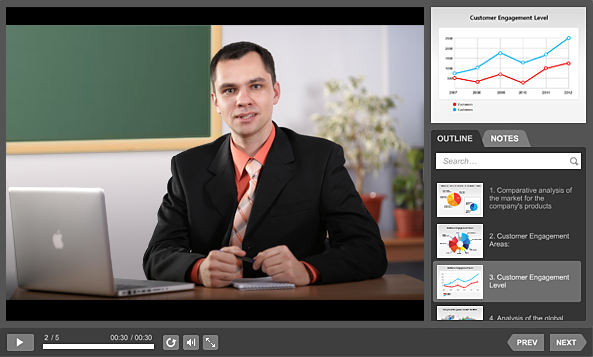What type of video lecture should I choose?
There are several different types of online video lectures:
1. Lecture Capture
What is a lecture capture? It is a recording of a live lesson or lecture at a school or university. Let’s take a look at the pros and cons of the lecture capture:

Creating a lecture capture isvery easy– you just need to take a video camera to one of your lectures and make a recording.
Live video capture preserves the interactivity of your lesson – students’ questions to the teacher and their reactions to the new information.
Without professional equipment and setup, the quality of the video (and especially audio) can be quite poor because you record it right in the lecture room.
Live video doesn’t allow you to re-record unsuccessful parts of a lecture or stop the lecture in case of technical difficulties.
2. Talking Head Video
A “talking head” lecture – is typically a webcam recording of a teacher, during which s/he expounds on the subject matter.

The recording of a talking head lecture doesn’t require much preparation. You just need to make a script of a lecture and set up a webcam.
A talking head video implies a flexible recording process, as it allows you to take a break, re-record some fragments and cut out unnecessary bits. Also, in case of interruptions, you can get back to the recording whenever you have free time.
It’s quite difficult to insert links into a talking head video. You can refer to a website or a book, but your students won’t be able to access it directly from the video.
Talking head lectures aren't interactive. You have to think over the script of such a lecture so that it santicipates any questions your students may have (and their attention span as well).
3. Voice Over Presentation
The main component of such a video lecture is usually a PowerPoint presentation, supplemented with a voice over that explains the slides. Such voiceover lessons can be created with a variety of tools, including iSpring Suite.

A voiceover presentation allows you to combine visual information with audio narration, which makes learning more effective.
The recorded voice over turns your presentation into a live lecture and allows you to use your verbal skills to explain the subject in the clearest way.
Such type of video lecture is limited to certain subjects. If you don’t have much visual information on the subject of your video lecture, the final presentation may become boring, while audio alone is not enough to attract students’ attention.
It may take you quite a long time to create your presentation, record audio and synchronize it with slides. At the same time, creating an interactive presentation with audio and video may be a little more difficult but much more effective than PowerPoint presentation with voice over.
4. Interactive Lecture
An interactive video lecture is one of the most complex types of online lecture videos. It includes video, audio, PowerPoint slides and other features, provided by the interactive video player. The easiest way to create an interactive lecture is to install video lecture software, like iSpring Suite.

A presentation allows you to present the information in your video lecture in the most effective way. You can use slides where visual information is required or switch to video to give your comments.
With an interactive video lecture you can fully control the playback of your presentation, creating a stunning presence effect for your students.
You can make your interactive video lectures more dynamic by switching between slide and video modes.
You can supplement an interactive video lecture with hyperlinks, resources and files, easily accessible straight from the interactive video player.
An interactive video lecture is a powerful combination of an interactive, rich media presentation and informative video lesson.
If you still have any questions, please ask them in our Community Forum.
Related Articles
